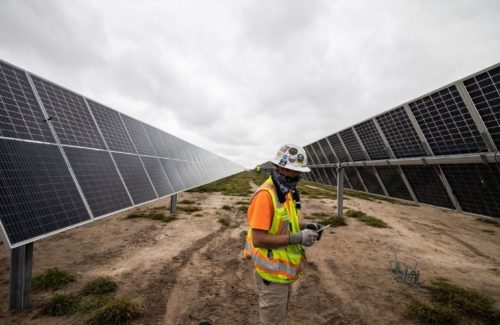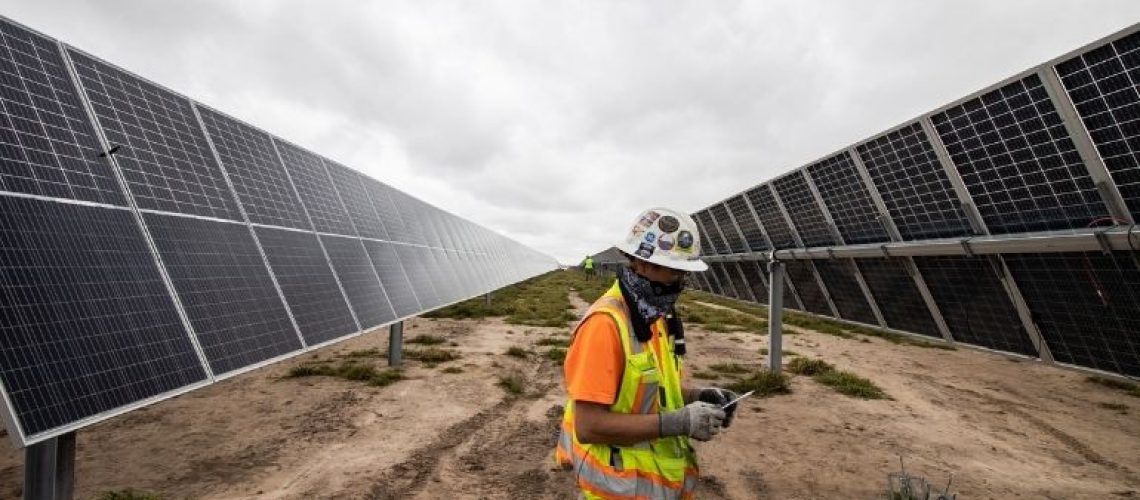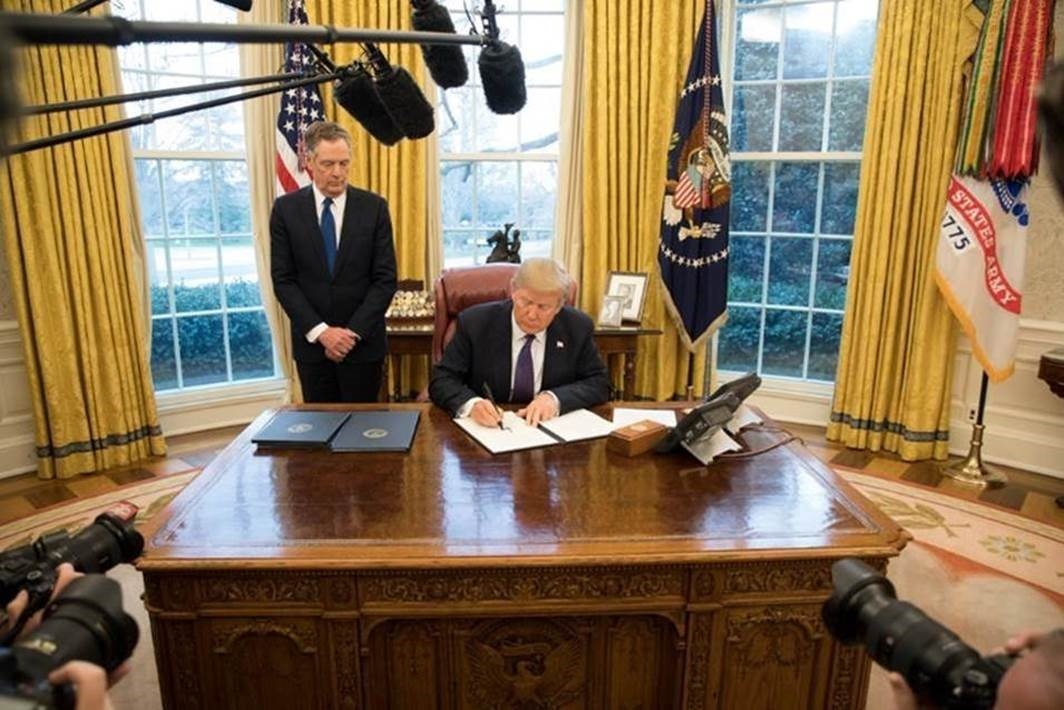The Dept. of Commerce has officially brought an end to an antidumping/countervailing duties (AD/CVD) investigation that has troubled the solar industry for the last 18 months.

Credit: Rosendin
The DOC’s final decision follows its preliminary determination: Chinese solar cell and panel producers are working in Cambodia, Malaysia, Thailand and Vietnam as a way to avoid paying duties on Chinese-made solar goods that have been in place since 2012. AD/CVD rates will be extended to solar exports coming out of Southeast Asia — except for products from Hanwha Qcells (Malaysia), JinkoSolar (Malaysia) and Boviet Solar (Vietnam), which are officially exempt from the extended tariffs.
New East Solar (Cambodia) was originally an excluded company in the preliminary decision but has been removed in the final decision. Product from New East Solar will be tariffed.
The case was first brought to Commerce by California-based solar panel assembler Auxin Solar in March 2022. Auxin officials said that Chinese solar producers were performing “minor or insignificant” work in Southeast Asia in order to move the panel’s country-of-origin outside China to avoid paying tariffs. Commerce took up the investigation and preliminarily decided in December 2022 to extend the tariffs to Southeast Asia. The solar industry has been in a heated battled ever since.
“For years the Chinese have flouted the U.S. trade remedy laws and today, with Commerce’s affirmative country-wide circumvention decisions on Cambodia, Malaysia, Thailand and Vietnam, we’ve successfully closed these loopholes,” stated Mamun Rashid, CEO of Auxin Solar, in a statement.
While the U.S. industry slowly rebuilds its domestic solar panel manufacturing capacity, the country depends on solar imports from Southeast Asia. Solar panels from Cambodia, Malaysia, Thailand and Vietnam accounted for 79.3% of U.S. panel imports in Q1 2023, according to Panjiva data. New AD/CVD rates will not go into effect until June 6, 2024, on account of an executive action by President Joe Biden. A rush to import tariff-free solar panels from Southeast Asia before June 2024 can be expected.
Meanwhile, U.S. solar developers and contractors have been trying to source panels elsewhere. Solar product testing lab PVEL has seen an uptick in requests for testing the performance and reliability of modules from unaffected countries like India and South Korea. Max Macpherson, Data & Analytics Report Manager at PVEL, said the U.S. solar market is currently facing a trifecta of issues that are limiting supply — this extended AD/CVD, domestic manufacturing still ramping and solar panel deliveries delayed under Uyghur Forced Labor Prevention Act (UFLPA) detainments.
“Getting modules from China through Customs and Border Protection is already risky with UFLPA,” he said. “A pro-extension decision introduces even more risk for site owners, although the UFLPA risk is likely to remain the biggest challenge. It will be difficult to anticipate exactly how much risk will be introduced when the tariff waiver expires in June 2024. Tariff rates change regularly based on review, so duties are not set in stone.”
Today’s Commerce decision has extended tariffs to Southeast Asian exports of:
- silicon cells using Chinese wafers
- final silicon solar panels using Chinese wafers that also use three of the following Chinese-made materials (“wafer-plus-three”):
- silver paste, aluminum frames, glass, backsheets, EVA sheets, junction boxes
- Note: Wafers produced outside of China with Chinese polysilicon are not considered to be wafers produced in China.
Auxin Solar had previously stated that it found the wafer-plus-three guideline to be an easy loophole, as long as panel manufacturers could purchase four non-Chinese inputs. Contractor surveys by Roth Capital Partners suggest that there are enough non-Chinese subcomponent manufacturers already in existence or expected to be producing by June 2024, so Southeast Asian module companies should have little issue complying and therefore avoiding the extra tariffs.
See our story on domestic solar subcomponent manufacturing.
While Southeast Asian solar panel producers should be able to comply with the AD/CVD rules by derisking their bills of materials, solar cell exporters have little else to do besides find non-Chinese wafer suppliers. This could hurt the growing U.S. solar panel manufacturing market, as the country currently has no domestic solar cell manufacturers and therefore must import this crucial product.
No domestic silicon solar panel manufacturers came out in support of Auxin’s petition for extended tariffs, with Silfab Solar telling Commerce that Auxin was in direct opposition to the “interests of the domestic solar industry as a whole.” Silfab runs two solar panel factories in Washington and is attempting to start another in South Carolina and relies on solar cells from Southeast Asia to produce Made-in-America solar panels. Additional tariffs on solar cells will affect all U.S. solar panel manufacturers until domestic solar cell producers are established.
“Some of the biggest challenges in rearranging supply chains could be for U.S. module manufacturers that currently rely on Southeast Asian cells. While Southeast Asian module manufacturers should be able to sidestep the tariffs by using non-Chinese module materials, and Indian or Korean module manufacturers are unaffected, U.S.-based module-only manufacturers will now have to accept tariff risk or source cells from a more limited pool of options — whether from other regions or made with a non-Chinese wafer, both of which are more limited in their availability,” said Macpherson with PVEL.
See Solar Power World’s list of U.S. solar panel manufacturers here.
As for the three excluded companies, the DOC investigated their operations and found them to not be circumventing the tariffs. Hanwha Qcells, a Korean company, has been producing solar cells in Malaysia for 14 years, including three years before the initial AD/CVD orders were imposed, very obviously showing it did not move operations to Malaysia to avoid AD/CVD in China.
Not explicitly excluded from the tariffs is Maxeon Solar Technologies, a Singaporean company with Chinese ties. Maxeon makes its solar cells in Malaysia but ships them to Mexico for module assembly. Solar cells exported to a non-inquiry country and then assembled into modules there are not subject to extended tariffs. To further avoid tariff conversations, Maxeon recently announced plans to start solar cell and panel manufacturing in the United States. Other big-name Chinese-tied solar companies have announced U.S. solar panel manufacturing plans, including LONGi, Canadian Solar and Trina Solar (rumored), but they have not specifically mentioned solar cell production in the United States.
Solar Power World will update this story with industry comments throughout the day.





